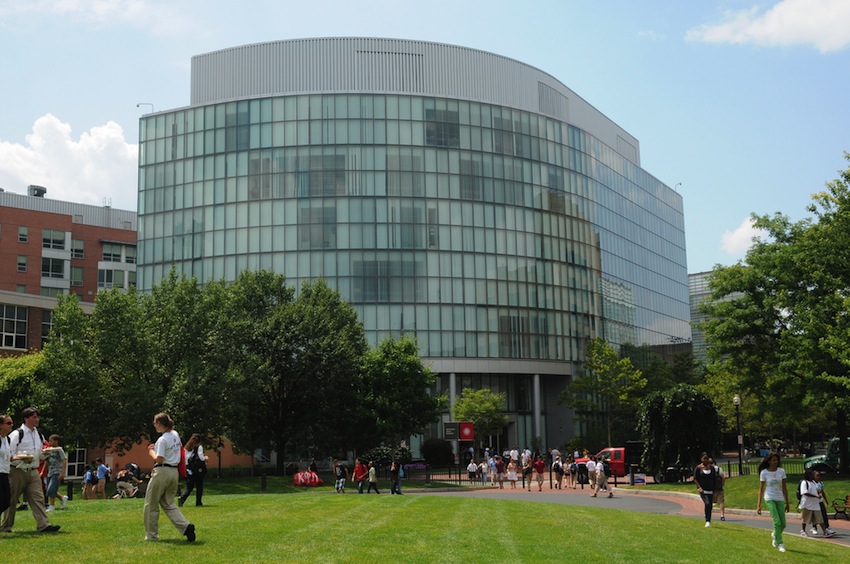Northeastern University Researchers Cured A Mouse With the ‘Superbug’

NORTHEASTERN UNIVERSITY CAMPUS PHOTO UPLOADED BY CITYYEAR ON FLICKR
Northeastern University’s Distinguished Professor of Biology Kim Lewis has overcome a leading public health threat: treating and eliminating methicillin resistant staphylococcus aureus, more commonly known as MRSA, or a “superbug”. The new, groundbreaking study was published Wednesday in the journal Nature.
The “superbug” infects approximately 1 million Americans each year and kills tens of thousands. MRSA can cause the development of chronic infections such as osteomyelitis (bone infection), endocarditis (heart infection), or infections of implanted medical devices. According to the CDC, these infections are often incurable, even with antibiotics.
MRSA is a bacteria that actively resists certain antibiotics, which is why it has fascinated the scientific and medical communities and, of course, the media. But according to a press release from Northeastern, Lewis, who is also the director of Northeastern’s Antimicrobial Discovery Center, suspected that a different adaptive function of bacteria might be the true culprit in making these infections so devastating.
Lewis’ work represents the culmination of more than a decade of research on a specialized class of cells produced by all pathogens called persisters. According to Lewis, these cells evolved to survive. “Survival is their only function,” he said. “They don’t do anything else.”
Lewis and his research team posited that if they could kill these expert survivors, perhaps they could cure chronic infections—even those resistant to multiple antibiotics such as MRSA. Furthermore, said Brian Conlon, a postdoctoral researcher in Lewis’ lab and first author on the paper, “if you can eradicate the persisters, there’s less of a chance that resistance will develop at all.”
Lewis, who was elected to the American Academy of Microbiology in 2011 for his scholarship in the field, found that persisters achieve their one goal by entering a dormant state that makes them resistant to traditional antibiotics. Since antibiotics work by targeting active cellular functions, they are useless against dormant persisters. This makes persisters critical to the success of chronic infections and biofilms, because as soon as a treatment runs its course, their reawakening allows for the infection to establish itself again.
In the recent study, Lewis’ team found that a drug called ADEP effectively wakes up the dormant cells and then initiates a self-destruct mechanism. The approach completely eradicated MRSA cells in a variety of laboratory experiments and, importantly, in a mouse model of chronic MRSA infection.
Coupling ADEP with a traditional antibiotic, Conlon noted, allowed the team to completely destroy the bacterial population without leaving any survivors.
As with all other antibiotics, actively growing bacterial cells will likely develop resistance to ADEP. “Cells that develop ADEP resistance become rather wimpy,” Lewis says. Other traditional drugs may work well against ADEP-resistant cells, providing a unique cocktail that not only kills persisters but also eliminates ADEP-resistant mutant bacteria, she says.
While ADEP currently targets only MRSA, Lewis’ team believes similar compounds may be useful for treating other infections as well as any other disease model that can only be overcome by eliminating a population of rogue cells, including cancerous tumors. Northeastern officials say that the team is pursuing several already.


